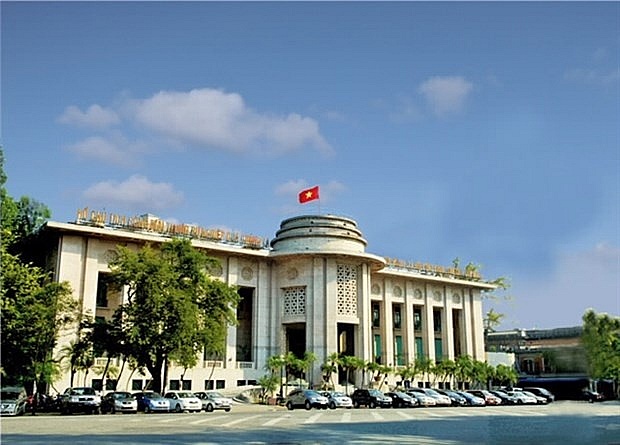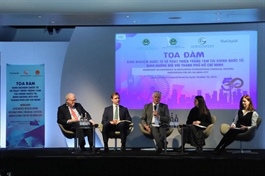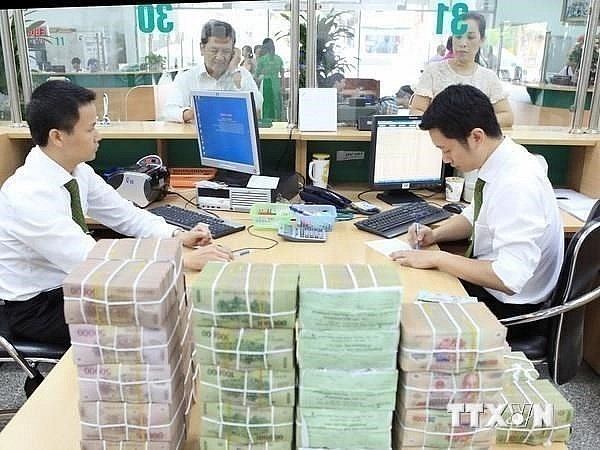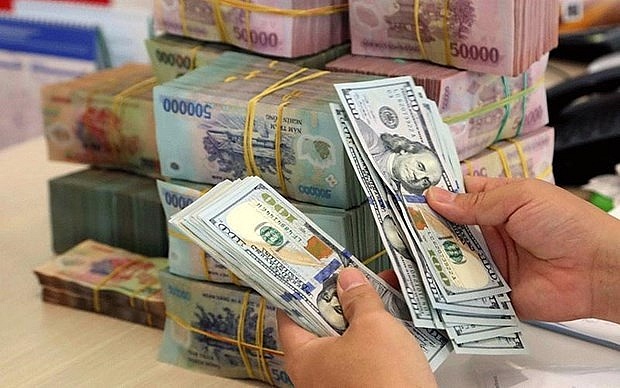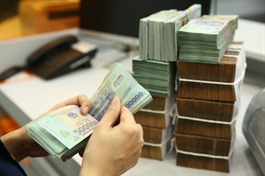Banks keen to maintain upward route
Banks keen to maintain upward route
Banks are hoping for positive developments to fill up the rest of the year after some performance dips so far in 2023.

VPBank announced its third-quarter financial report, with pre-tax profit of its parent bank reaching $124.95 million, down 36 per cent on-year. In the nine months of 2023, VPBank’s separate pre-tax profit reached $446.48 million, down 45 per cent on-year.
As of the end of the third quarter of 2023, the parent bank’s outstanding credit jumped by more than 22 per cent compared to the beginning of the year, hitting more than $16.86 billion. This is an impressive growth rate compared to the industry average rate of 6.9 per cent as of the end of September.
Like VPBank, LPBank also recorded positive credit growth in the period, with outstanding credit of $10.73 billion, up 11.38 per cent against the beginning of the year. In the third quarter, LPBank posted a pre-tax profit of $50.47 million, an increase of 41 per cent from the previous quarter.
The bank maintains its growth trajectory with the potential to make a breakthrough in the last three months. Accordingly, accumulated until September, LPBank’s pre-tax profit reached $149.77 million, fulfilling 61.45 per cent of the year’s profit plan.
Meanwhile, SSI Securities Corporation believes that Techcombank’s net interest margin (NIM) continued to face pressure in the third quarter of 2023 due to the flexible interest rate mechanism applied to some customers. Accordingly, it forecast Techcombank’s pre-tax profit to have reached about $232-240 million in the third quarter of 2023, down 12-15 per cent over the same period.
TPBank’s pre-tax profit is expected to hit about $59-65 million in the third quarter, down 25-32 per cent over the same period last year. The decrease was mainly due to the high base level of last year. TPBank’s NIM decline and the burden of provisioning are said to be the reasons why the bank’s pre-tax profit declined in the third quarter of 2023.
As of early October, the bank’s credit growth rate is about 7 per cent to hit nearly $7.28 billion, down 0.6 per cent compared with the previous month.
VIB’s credit growth stood at nearly $9.93 billion in the period. However, SSI estimates that its pre-tax profit will reach $109.8 million in the third quarter of 2023, down 3 per cent over the same period last year, due to the burden of provisioning.
Banks such as ACB, HDBank, Sacombank, VietinBank, and Vietcombank saw profits increase in the first nine months of 2023.
Financial statements indicate that asset quality continues to decline, but the rate of bad debt formation has improved. The non-performing loans (NPLs) of banks began to show signs of decline. Notably, banks hit by the slowdown in the real estate market and the retail customer segment will face more bad debt pressure than those with safe portfolios.
“Although the State Bank of Vietnam (SBV) only allows restructuring bad debts in debt group 1, it cannot be denied that its issuance of Circular No.02/2023/TT-NHNN also supports banks in classifying debt groups for customers, partly easing bad debt pressure this year,” said economist Nguyen Tri Hieu.
Bank leaders also expect that NPLs will have peaked in the third quarter and remain under control in the year-end period, in anticipation of a positive economic outlook and improved consumer income.
Nguyen Anh Tung, the banks, insurance, and securities manager at KB Securities Vietnam, said that the banking industry still faced difficulties in the short term. Due to headwinds in the corporate bond and bancassurance markets, it will take more time for the revenue in these two segments to recover.
“The full-year credit growth will likely be far from the 14 per cent target set by the SBV, but it will reach the target of 10-12 per cent,” Tung said. “Our forecast is based on expectations, including rebounding domestic consumption at year-end, improved credit demand for different industries fuelled by export-import activities, and slight improvements in the real estate market with legal bottlenecks gradually removed.”
Credit recovery will be the driving force behind boosting NIM in the year-end period. “Besides that, we expect more positive developments in NIM and bad debt control,” Tung added.






